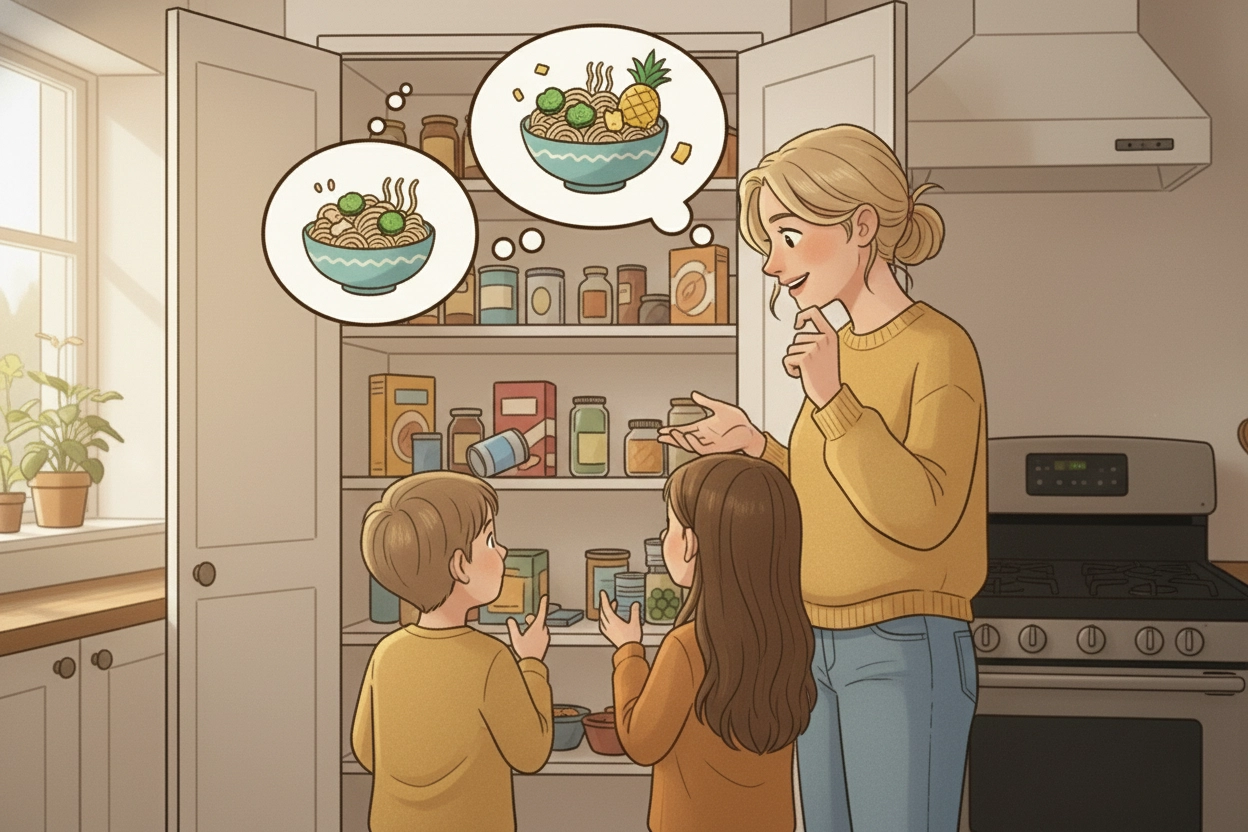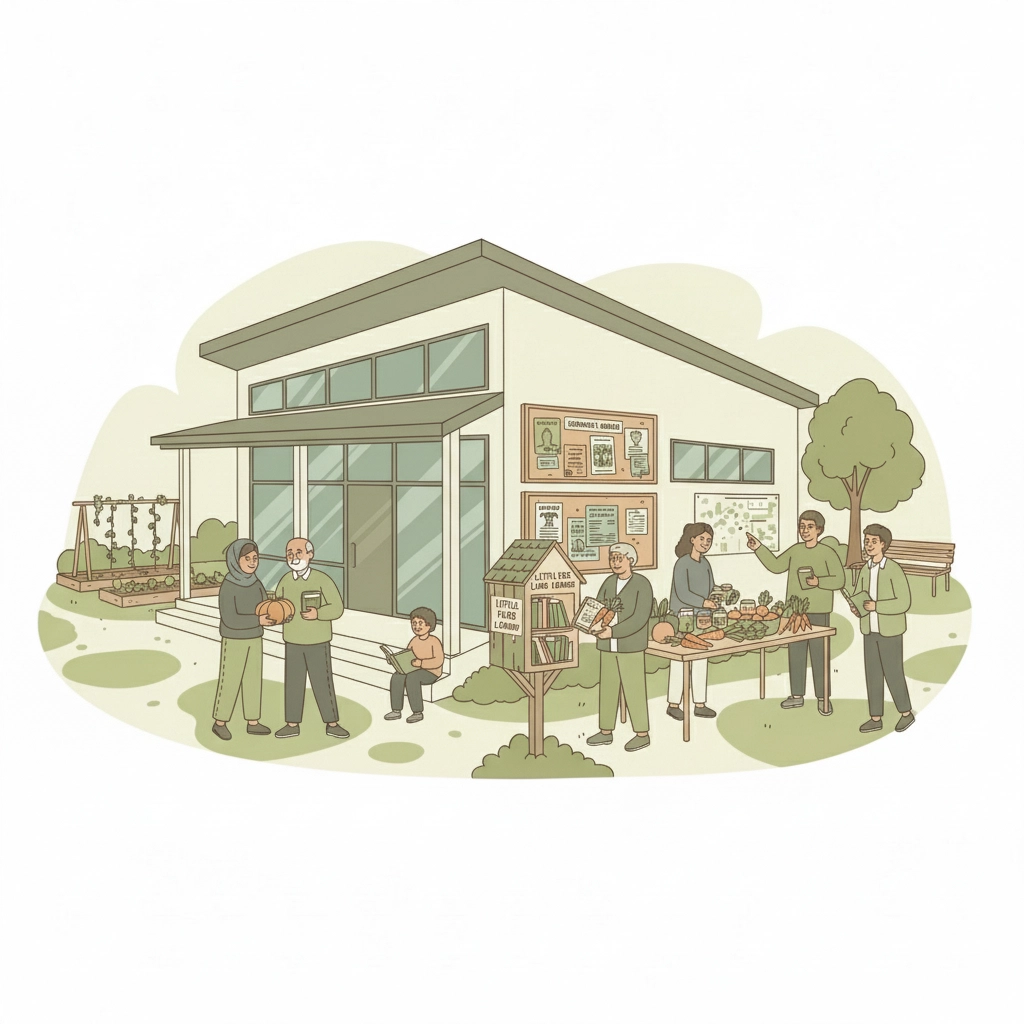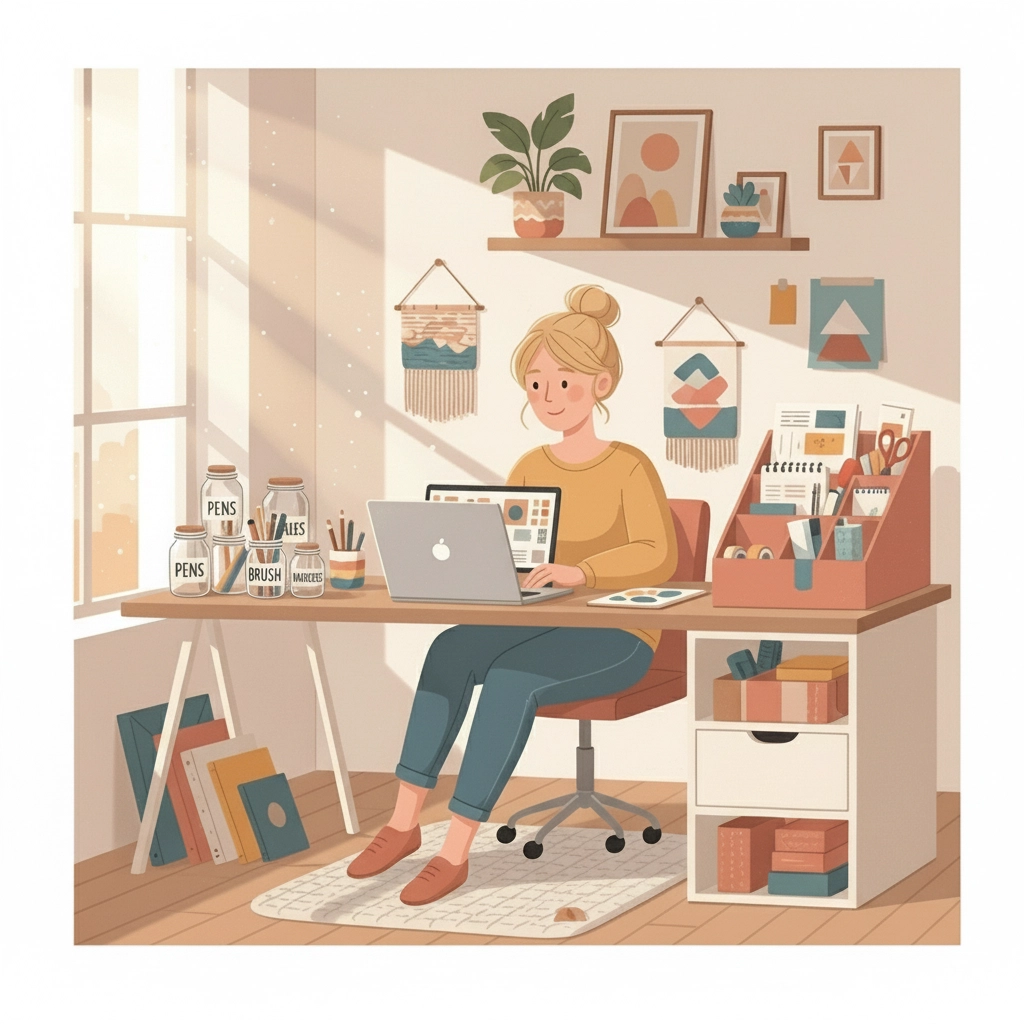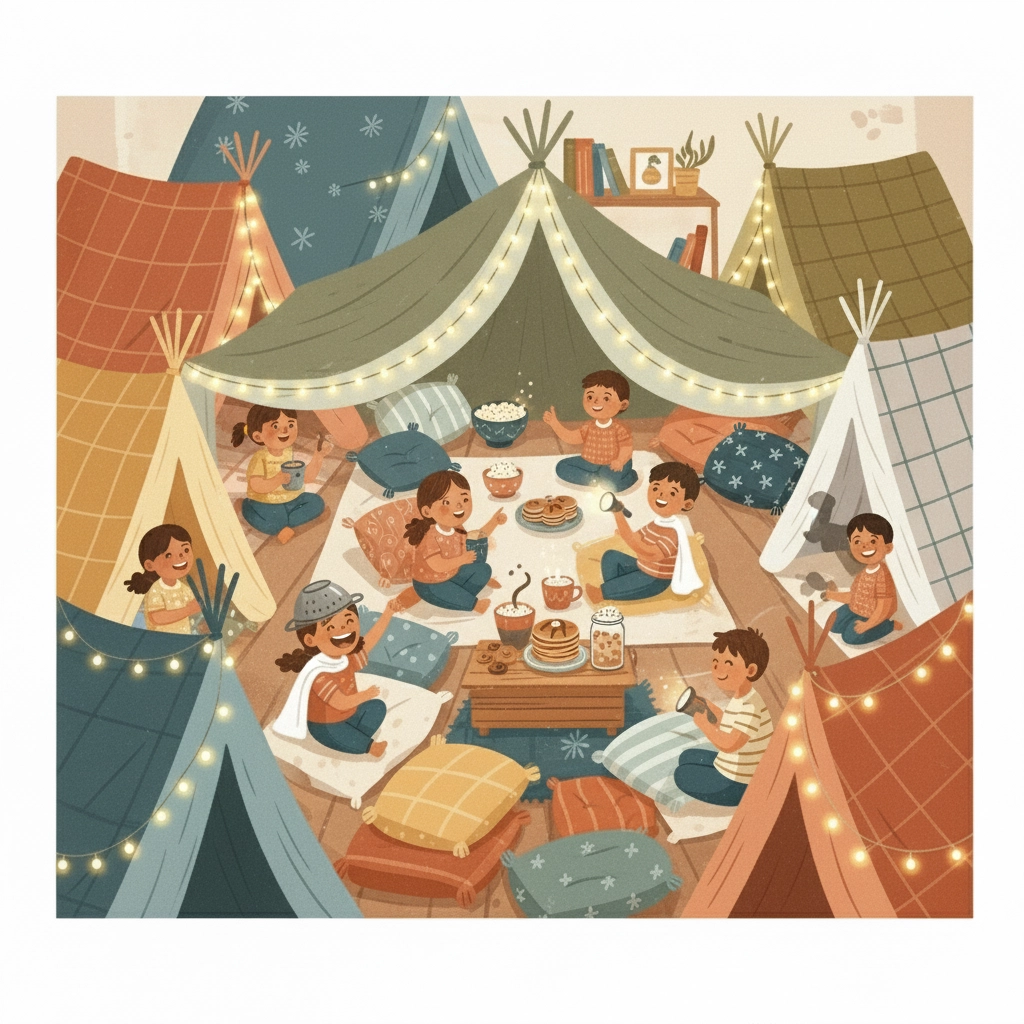From Pickle Relish to Possibility: What Poverty Taught Me About Creativity
- Traci Shoblom
- Oct 26
- 6 min read

Let's get real for a minute. I've been there, staring at bills that don't add up, wondering if I could stretch pasta and creativity far enough to feed my kids another week. We have a joke in our family that I can make an entire holiday dinner from sticks and leaves I found in the backyard. While that's an exaggeration, some weeks our pantry was like an episode of the cooking show "Chopped." "Let's see. We have pickle relish, ramen, peanut butter, and canned pineapple. What can we make with that?"

Starting over from scratch (twice) was exhausting and scary. It wasn't romantic or fun, it was survival. And in that survival, I began rebuilding my resourcefulness, my confidence, and yes, my ability to make something from whatever was in front of me.
Welcome to Office Hours, where we tackle the tough stuff together. Today's lesson? How to live creatively on very little money, and get through the process with dignity. Because here's what I learned during my own financial rock-bottom moments: constraints don't kill creativity. They can supercharge it, out of necessity, not choice.
When "Broke" Forces Creativity (The Breakthrough Comes Later)
Twice in my life I walked away from a marriage with literally what I could fit in my car and a small uHaul. No spousal support or child support (until it was too late), I was starting completely over. New city, minimal savings, and two kids depending on me to figure it out. I panicked, of course I did. Then I got practical. Curiosity came later, when the dust settled.
In the moment, I wasn't chasing growth; I was trying to get to next week. Only in hindsight did I ask: what if necessity could push me to innovate?
I didn't choose that mindset shift, I earned it the hard way. Suddenly, every dollar had to work overtime, and every solution required a creative approach. It was stressful and relentless. There were many, many nights when I lay awake in a cold sweat worrying about getting evicted or having my car repossessed. We ran out of gas on the way to school more than once.
But I didn't want the kids' childhood to be compromised. We may have been forced to live in the 'hood of Long Beach, but we were still a family.
When I had the bandwidth, I started treating the limitations as design challenges. How do you create a birthday party with $15? How do you redecorate a space with items you already own? How do you build a business when your marketing budget is essentially zero?
The answers were practical first. The revelations came later.
The Art of Strategic Penny-Pinching
Budget Hacks That Actually Help (Not a Cure-All)
Forget extreme couponing (unless that's your jam). Real budget stretching happens when you get strategic about where your dollars go:
• The 24-Hour Rule: Before any non-essential purchase, wait a full day. You'd be amazed how many "needs" evaporate with a little time.
• Subscription Audit: List every recurring payment. Cancel what you haven't used in 30 days. That unused gym membership could be groceries for a week.
• The Envelope Method: Cash for categories like food and entertainment. When it's gone, you're done. No credit card backup plans. (Chances are, your credit is shot and those cards are full anyway.)
• Generic Brand Challenge: Switch to store brands for everything except three items you genuinely can't compromise on. The savings add up fast.
Community Resources: Your Hidden Treasure Map
Most communities are sitting on goldmines of free resources that go underused:
• Little Free Libraries: Books, but also community boards with free offerings • Community Centers: Free classes, events, and sometimes equipment lending • Religious Organizations: Many offer food pantries, clothing swaps, and skill-sharing programs regardless of membership • Facebook Buy Nothing Groups: Everything from furniture to fresh vegetables, shared freely • Library Programs: Beyond books, tool lending, seed libraries, maker spaces, and free classes
The key is showing up consistently and contributing when you can, even if it's just your time or a genuine thank you. Use what you need without guilt. Surviving this season is success.

DIY: Where Necessity Meets Artistry
Creative Reuse Champions
During my tightest months, I became the queen of repurposing, out of necessity, not for fun. Glass jars became storage containers, organization systems, and even light fixtures. Old t-shirts became cleaning rags, plant ties, and emergency gift wrap. Cardboard boxes transformed into storage solutions, play structures for the kids, and even furniture.
The rule: before throwing anything away, ask "What else could this become?" In those months, that question was a lifeline.
Free Tools for Creative Living
• Canva: Professional-looking designs for everything from party invitations to small business materials • YouTube University: Learn any skill imaginable, from home repair to gourmet cooking with cheap ingredients • Pinterest: The ultimate resource for DIY tutorials and creative reuse ideas • Freecycle Networks: Online communities dedicated to giving away usable items • Apps like Honey and Rakuten: Automatic coupon application and cash back on necessary purchases

Unconventional Income: When Traditional Jobs Aren't Enough
Turn Your Skills Into Side Hustles
Sometimes creativity means thinking beyond traditional employment. It's not easy, and it's often exhausting. During my restart phase, I discovered income streams I never would have considered otherwise:
• Skill Bartering: Trading services instead of cash, childcare for web design, meal prep for tax preparation • Micro-Consulting: One-hour sessions helping people solve specific problems in your area of expertise • Digital Products: Create once, sell repeatedly, templates, guides, printables • Community Teaching: Offer workshops at community centers or libraries for small fees
Replace Expenses With Creativity
Instead of paying for entertainment, we became entertainment architects. Movie nights became themed experiences with homemade snacks and living room fort construction. Restaurant dinners turned into cooking challenges using whatever ingredients we had on hand.
We did our best to make it fun. Some nights landed; some didn't, and that's okay. The kids felt the love even when the budget was tight. Those nights were wins, not proof that hardship is magical.

The Psychology of Abundant Thinking on a Tight Budget
Gratitude as a Practical Tool
I'm not talking about toxic positivity here. I'm talking about strategic gratitude that actually shifts your perspective. When you're focused on what you have, even if it's just instant ramen and gas in the car, you start seeing possibilities instead of limitations. Gratitude won't pay the rent, but it can steady your nerves long enough to choose your next step.
Reframe Scarcity as Creative Fuel
Some of my most innovative solutions came from having no other choice. When you can't throw money at a problem, you have to throw creativity at it. That muscle gets stronger with use. It's fuel, not a badge of honor, and no one should have to be broke to be inventive.
Small Wins: Building Momentum When Money Is Tight
Celebrate the micro-victories:
• Paid one bill early • Found a five-dollar bill in an old jacket • Stretched leftovers into three different meals • Fixed something instead of replacing it • Organized a space using only items you already owned
These aren't just budget wins, they're confidence builders and survival markers. Each small success proves you're resourceful, capable, and moving forward.
If all you did was get through today, that counts.
Your Next Steps: From Surviving to Thriving
The 30-Day Creative Living Challenge
Week 1: Audit everything, subscriptions, habits, automatic expenses Week 2: Explore your community resources and make one new connection Week 3: Try three DIY solutions for problems you'd normally solve with purchases Week 4: Test one unconventional income idea or expense-replacement strategy
Adapt this plan to your reality; skip anything that adds stress.
How It Started vs. How It Ended
My kids are all grown now and believe it or not, we look back on that time in our lives fondly. We don't remember the scarcity. We remember the family meetings where we made decisions about what mattered to us as a family and what didn't. We chose, as a family, for me to keep freelancing instead of getting a J.O.B. so that I could be home with the kids. We started by having a conversation about our values and then built our life from there.
Now? We are a tight, close family and know without a doubt that we have each others' backs. I wasn't able to give them the childhood I'd dreamed of giving them, but in the end, we created something more important than expensive electronics and vacations. We created a sense of family.

Remember This
Financial constraints aren't a character flaw or a permanent state. They're temporary circumstances that can teach you permanent skills. Creativity is a tool for navigating hard times, not a cure-all. The stress is real, and making it through is a win.
Whether you're starting over like I was, or just looking to live more intentionally with your resources, remember: innovation can thrive under pressure, community grows through sharing, and sometimes the best solutions come from having no other choice but to get creative.
If you're in it right now, you're not failing, you are enduring.
You've got enough to take the next step. Now let's see what you can build with it.
Ready to dive deeper into creative problem-solving and resilient living? Join us at The Creative Professor for more resources, community connections, and real-talk guidance on making creativity your competitive advantage( regardless of your budget.)